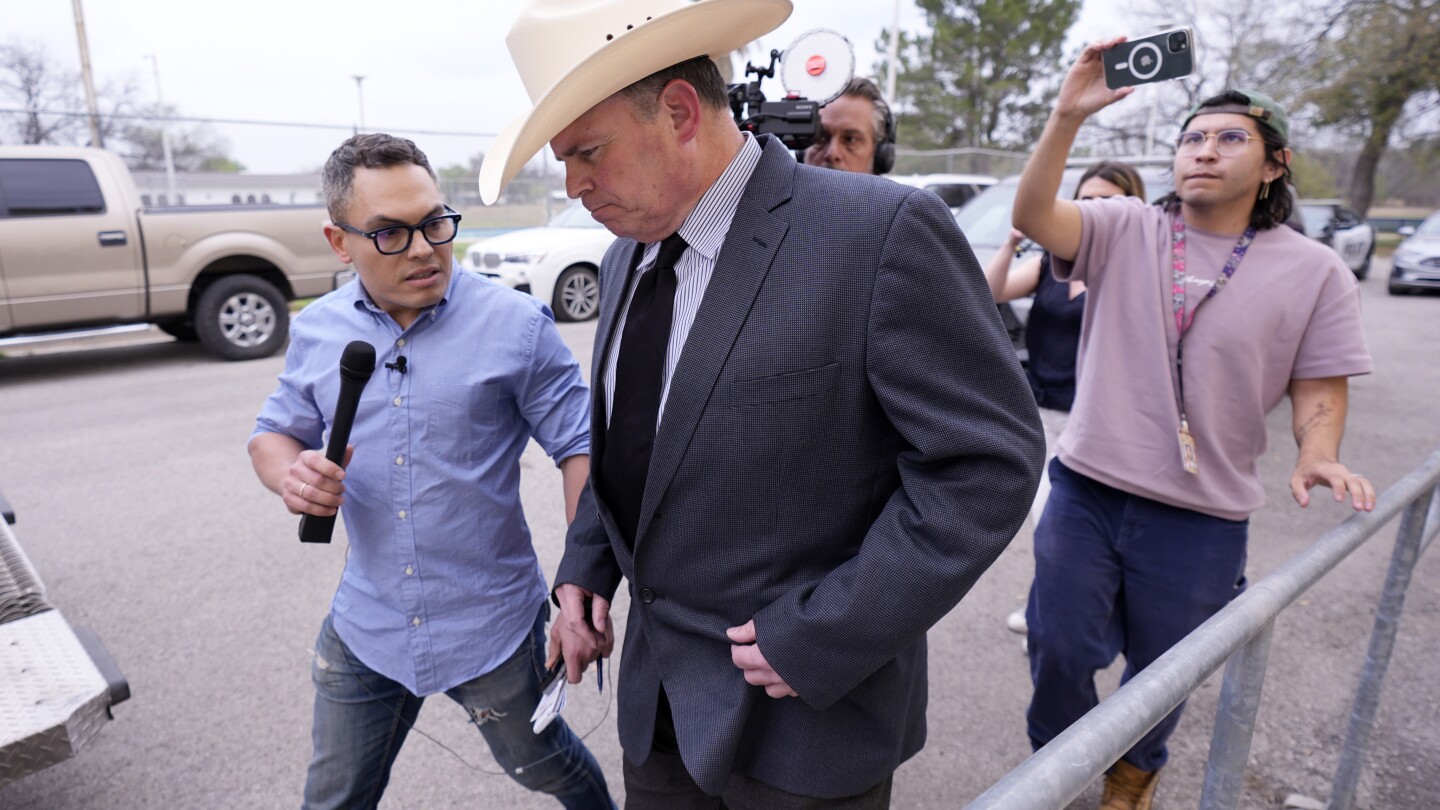UVALDE, Texas (AP) — An independent report commissioned by the City of Uvalde into a deadly 2022 school shooting found that none of the city’s officers violated department policy, infuriating families of some of the 19 children and two teachers who were killed in one of the deadliest classroom shootings in U.S. history.
Previous investigations in the two years since the attack at Robb Elementary School have found myriad failures by responding officers. The report released Thursday was conducted by Jesse Prado, an Austin-based investigator and former police detective who was hired by the city to investigate the local response.
Here is what to know about the latest inquiry into the Texas school shooting:
WHO ORDERED THE REPORT?
City officials hired Prado in July 2022, less than two months after the shooting, around the time that state lawmakers released a report that found “egregiously poor decision-making” by law enforcement. Of the nearly 400 law enforcement agents who responded to the shooting, more than two dozen were from the Uvalde Police Department.
The report notes that it was prepared “in anticipation of litigation and/or for use in trial,” and that every person interviewed for the report was represented by their attorneys.
Prado also acknowledged it took more than a year-and-a-half to release the report, saying it took far longer than he expected to gather the necessary information.
“I had a lot of difficulty in gathering all of the evidence, gathering the information that I needed to complete a thorough examination of what these officers did,” Prado said.
The City of Uvalde sued District Attorney Christina Mitchell, accusing prosecutors of not being transparent and withholding records related to the shooting, and Prado said he was ultimately provided some records, but not everything that he requested.
WHAT DID THE REPORT SAY?
In addition to summarizing detailed interviews with Uvalde police officers and dispatchers, none of whom were found to have violated agency policies, the report includes a series of observations and recommendations.
Among the top problems noted was how officers failed to enter the room and stop the shooter until more than an hour had passed after they entered the building. That meant the gunman was not killed until approximately 77 minutes after law enforcement first arrived.
“Officers responding to an active shooter incident must continually seek to eliminate the threat and enable victim response,” one recommendation read. “An active shooter with access to victims should never be considered and treated as a barricaded subject.”
Prado also concluded that he believed the assessment of Paul Guerrero, the acting commander of the Border Patrol tactical team, who said he thought the door of the classroom where the shooting took place was locked. The report detailed many attempts by officers to get keys to unlock doors inside the school, delaying efforts to get inside classrooms.
Both the previous Justice Department report and the investigation by state lawmakers have doubted the door was ever locked.
The report also accused Mitchell, the local prosecutor, of not cooperating with the inquiry. Former Uvalde Mayor Don McLaughlin has previously accused Mitchell of a “cover-up” and hindering the investigation.
Messages left Thursday for Mitchell seeking comment on the report were not immediately returned. A criminal investigation into the law enforcement response remains open and a grand jury was summoned earlier this year.
WHAT HAVE PAST REPORTS FOUND?
A U.S. Department of Justice report released in January found numerous failures by responding officers, most notably that officers didn’t treat the crisis as an active shooter situation and engage the gunman quickly, running counter to generally accepted practices.
The same nearly 600-page report also found responding officers acted with “no urgency” in establishing a command post and communicated inaccurate information to grieving families. It cataloged a sweeping array of training, communication, leadership and technology problems that federal officials said contributed to the crisis lasting far longer than necessary.
The Justice Department reported that 48 minutes after the shooter entered the school, Uvalde Acting Police Chief Mariano Pargas “continued to provide no direction, command or control to personnel.”
In the new report, Pardo said Pargas “had no doubt” that the school police chief was in charge because the school is within UCISD’s jurisdiction. Pargas retired after his interview with Pardo. But the investigator said, “It would be my recommendation, my team’s recommendation, to exonerate Lt. Pargas.”
WHAT WAS THE REACTION FROM FAMILIES?
Several family members of the victims reacted angrily to Prado’s presentation, including when he said that families who rushed to the school that day compromised the police response.
Some members stormed out of the public briefing, and others erupted in anger when Prado left the room after his presentation.
“Bring him back!” several shouted.
Prado returned, sat and listened as victims’ families cried and criticized the report, the council and the responding officers.
“My daughter was left for dead,” Ruben Zamorra said. “These police officers signed up to do a job. They didn’t do it.”
___
Murphy reported from Oklahoma City. Associated Press reporters Juan A. Lozano in Houston, Valerie Gonzalez in McAllen, Texas, and Anita Snow in Phoenix contributed to this report.

